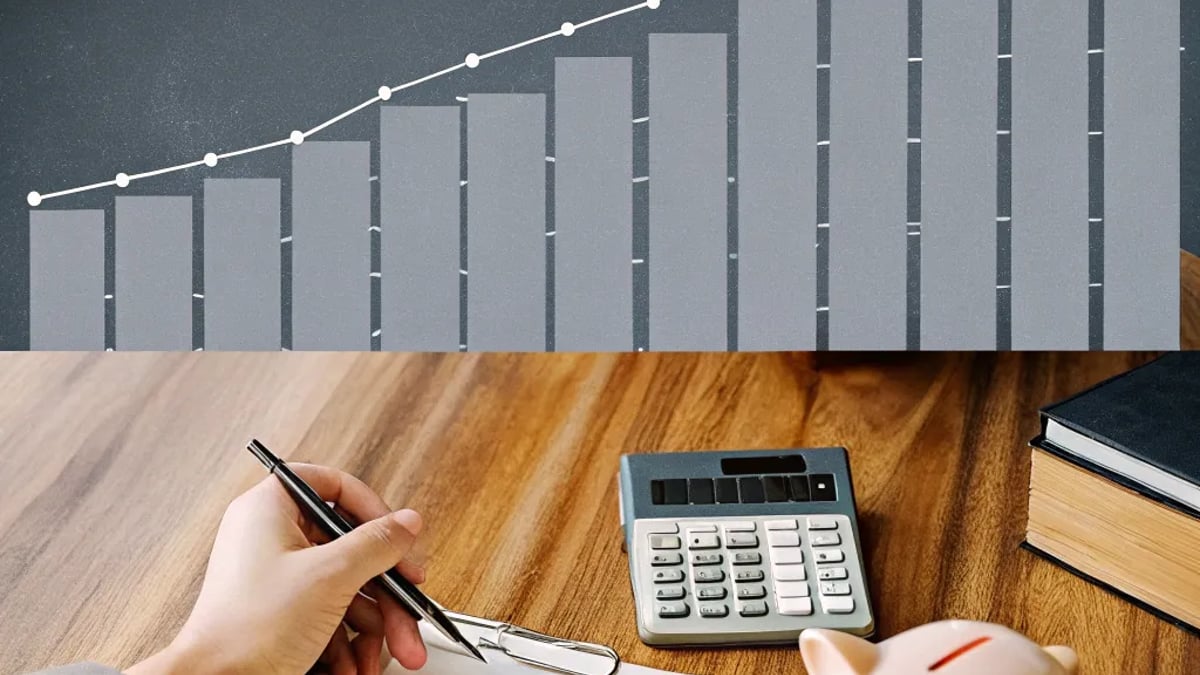
Living paycheck to paycheck feels like running on a financial treadmill—lots of effort but never really moving forward. I've been there, watching my bank account dwindle to single digits before the next payday arrives. The stress is real, and the dream of building savings seems impossibly distant when every dollar is already spoken for before it hits your account.
The Reality of America's Savings Crisis
Most Americans know this struggle intimately. According to recent financial surveys, nearly 60% of Americans report living paycheck to paycheck, with little to no emergency savings. This financial tightrope-walking isn't just a low-income problem either—it spans across income brackets, affecting even households earning six figures.
"I was making decent money but still had nothing left at month's end," shares Marcus, a software developer from Portland who transformed his finances last year. "It wasn't until I really looked at where my money was going that things changed."
The good news? The path from financial survival mode to consistently saving $500 monthly is achievable—even if it currently seems impossible. Let's break down the practical steps that can get you there.

Understanding Your Current Financial Reality
Before you can change your financial situation, you need crystal-clear visibility into what's happening with your money now.
Track Every Dollar for 30 Days
The first step might seem tedious, but it's non-negotiable: track every single dollar you spend for a full month. Apps like Mint, YNAB, or even a simple spreadsheet can help, but the method matters less than the commitment.
"When I finally tracked my spending for a month, I was shocked to find I was spending over $400 on random Amazon purchases I barely remembered making," says Tina, a nurse who now saves $600 monthly. "It was a wake-up call."
Don't just record expenses—categorize them as:
- Essential fixed costs (rent, insurance, loan payments)
- Essential variable costs (groceries, utilities)
- Non-essential spending (dining out, entertainment, subscriptions)

This exercise often reveals spending patterns you weren't aware of. One Reddit user in r/Frugal shared: "I thought I was broke because of rent, but tracking showed I was spending $500 monthly on takeout I barely enjoyed."
Calculate Your Actual Income
Next, determine your actual take-home pay after taxes and automatic deductions. Many people budget based on gross income, leading to planning errors.
For those with irregular income, calculate your average monthly income based on the past 6-12 months to establish a baseline.
Finding Your First $500 in Savings
Now comes the transformative part—identifying where your $500 monthly savings will come from. This typically requires a combination of approaches rather than one big change.

1. Tackle the Big Three Expenses
Housing, transportation, and food typically consume 70% of most budgets. Making even small adjustments to these categories can yield significant savings.
Housing Hacks:
- Consider a roommate (potential savings: $400-800/month)
- Negotiate rent upon renewal (potential savings: $50-100/month)
- Refinance your mortgage if rates have dropped (potential savings: $100-300/month)
One Redditor noted: "I'm saving $500 per month on rent+utility bills because I'm in a relationship and split expenses. But we're not big spenders either way."
Transportation Tweaks:
- Shop for better car insurance rates (potential savings: $30-150/month)
- Use public transportation one week per month (potential savings: $40-100)
- Combine errands to reduce fuel costs (potential savings: $20-50/month)
Food Fixes:
- Meal plan around sales and seasonal items (potential savings: $100-300/month)
- Reduce restaurant meals by 50% (potential savings: $100-400/month)
- Bring lunch to work 4 days weekly (potential savings: $80-200/month)
2. Eliminate Subscription Creep
The average American spends $219 monthly on subscriptions, often without realizing the total. Review every recurring charge and ask three questions:
- Do I use this regularly?
- Does it bring me joy or value worth the cost?
- Is there a free or cheaper alternative?
"I was paying for Netflix, Hulu, Disney+, HBO Max, and Amazon Prime—over $70 monthly for services I barely had time to use," shares Alex, who now rotates one streaming service monthly. "Now I spend $15 monthly and actually watch what I pay for."
3. Implement the 24-Hour Rule for Purchases
For non-essential purchases over $50, institute a mandatory 24-hour waiting period. This cooling-off period often reveals which purchases are impulses versus genuine needs or wants.
A financial planner I interviewed calls this the "sleep on it" strategy: "If you still want it tomorrow and can afford it without compromising your savings goals, then it's probably worth buying."
How to Make Saving Automatic and Painless
Willpower is a finite resource. The key to consistent saving is removing the decision-making process entirely.
Set Up Automatic Transfers
Schedule an automatic transfer of $500 (or whatever amount you're starting with) from checking to savings immediately after payday. Treating savings as a non-negotiable expense rather than "whatever's left over" dramatically increases success rates.
As one r/FinancialPlanning user shared: "After all bills/savings are paid, I have about $300 discretionary per month. Gross salary is about $15K/month. The key is paying yourself first."
Use Separate Accounts for Different Purposes
Consider creating separate savings accounts for different goals:
- Emergency fund (3-6 months of expenses)
- Short-term savings (vacations, holidays, annual expenses)
- Long-term goals (down payment, education)
This approach, sometimes called "bucketing," makes progress visible and reduces the temptation to dip into savings.
What About Increasing Your Income?
While cutting expenses is important, sometimes the math simply doesn't work—especially in high-cost areas or with lower incomes. In these cases, focusing on income growth becomes essential.
Side Hustle Opportunities
Consider these relatively accessible options:
- Freelancing in your professional field (potential: $200-1000+/month)
- Driving for rideshare or delivery services (potential: $200-800/month)
- Pet sitting or house sitting (potential: $100-500/month)
- Selling handmade items or vintage finds online (potential: varies widely)
"I started doing bookkeeping for two small businesses on weekends," says Jamie, who reached her $500 savings goal in three months. "It's 8 hours monthly for $400 extra, which goes straight to savings."
Ask for a Raise or Promotion
If you haven't received a significant pay increase in over a year, it might be time to have that conversation. Prepare by:
- Documenting your contributions and achievements
- Researching market rates for your position
- Timing the conversation appropriately (after successful projects, before budget planning)
Common Questions About Building Savings
How Much Should I Have in Emergency Savings Before Investing?
This question appears frequently in financial forums, with varying opinions. The consensus among financial advisors suggests:
- Start with a mini emergency fund of $1,000 while paying off high-interest debt
- Build to 3-6 months of essential expenses in highly liquid savings
- Begin investing beyond employer retirement matches once those targets are met
As one Reddit user wisely noted: "Emergency funds aren't investments—they're insurance against life's inevitable surprises."
Should I Save or Pay Off Debt First?
The mathematically optimal approach depends on interest rates:
- High-interest debt (>7-8%): Focus on debt first
- Low-interest debt (<4-5%): Balance between debt payment and saving
- Medium-interest debt (5-7%): Split your efforts fairly evenly
However, psychology matters too. Some people need the emotional win of seeing savings grow to stay motivated, even if paying debt first makes more mathematical sense.
Real-Life Success Stories: From Struggle to $500/Month
Michael's Story: Small Changes, Big Results
Michael, a teacher in Minnesota, went from zero savings to $600 monthly by making several small changes:
- Switched cell phone carriers ($45 monthly savings)
- Cancelled unused gym membership ($80 monthly savings)
- Reduced eating out from 12 times to 4 times monthly ($200 savings)
- Negotiated internet bill ($30 monthly savings)
- Started carpooling twice weekly ($60 monthly savings)
- Implemented meal planning ($150 monthly savings)
- Cancelled three subscription services ($35 monthly savings)
"No single change felt dramatic," Michael explained, "but together they transformed my financial situation without making me miserable."
Sarah's Income-Focused Approach
Sarah, a graphic designer, couldn't cut her already bare-bones budget in expensive San Francisco. Instead, she:
- Created pre-designed logo packages to sell online ($250 monthly)
- Taught a monthly workshop at a local community center ($200 monthly)
- Negotiated a $100 monthly raise by taking on additional responsibilities
"I was already living pretty frugally," Sarah shared. "For me, the path to saving was finding ways to make my skills generate more income."
Creating Your Personalized $500 Savings Plan
Now it's time to create your own roadmap. Based on your financial tracking from earlier, identify specific changes that could help you reach the $500 monthly savings target.
Here's a sample worksheet approach:
| Category | Current Spending | Potential Savings | Action Steps |
|---|---|---|---|
| Housing | $1,500 | $200 | Find roommate for spare bedroom |
| Transportation | $400 | $75 | Shop for new insurance, combine errands |
| Food | $800 | $150 | Meal plan, reduce takeout to once weekly |
| Subscriptions | $100 | $65 | Cancel unused services, share accounts |
| Utilities | $250 | $50 | Lower thermostat, switch to LED bulbs |
| Shopping | $300 | $100 | Implement 24-hour rule, thrift first policy |
| TOTAL | $640 |
Remember that your first month might not hit the full $500 target—building to that level over 2-3 months is still an impressive achievement.
Staying Motivated Through the Journey
Financial changes require sustained effort. Here are strategies to maintain momentum:
Celebrate Milestones
Set smaller targets along the way—perhaps $100, then $250, then $500 monthly. Celebrate each milestone (without spending much!).
Track Your Progress Visually
Whether it's a simple chart on your refrigerator or a digital tracker, watching your savings grow provides powerful reinforcement.
Find an Accountability Partner
Share your goals with someone who can check in on your progress. Financial journeys are easier with support.
Remember Your "Why"
Connect your savings to meaningful goals. Saving for "financial security" feels abstract, but saving for "freedom to change careers" or "down payment on a home near family" creates emotional investment.
Avoiding Common Setbacks
Even the best-laid financial plans face challenges. Prepare for these common obstacles:
Unexpected Expenses
They're inevitable—cars break down, medical issues arise, appliances fail. This is precisely why building an emergency fund takes priority. Until your fund is established, have a backup plan like:
- A list of items you could sell if needed
- Side hustle options you could activate quickly
- Clear understanding of which expenses could temporarily pause
Social Pressure
Friends and family who don't share your financial goals may unintentionally sabotage your progress. Strategies include:
- Suggesting free or low-cost alternatives ("Let's do a potluck instead of dining out")
- Being honest but brief ("I'm focusing on some financial goals right now")
- Taking turns hosting gatherings at home
Lifestyle Creep
As your financial situation improves, resist the temptation to immediately upgrade your lifestyle. Consider implementing a "one month waiting period" for any lifestyle upgrades to ensure they align with your values and goals.
The Compound Effect of $500 Monthly
Saving $500 monthly might not feel transformative initially, but consider the compound effect:
- In 1 year: $6,000 (a solid emergency fund)
- In 5 years: $30,000 (plus any interest/investment returns)
- In 10 years: $60,000 (plus significant compound growth if invested)
This growth represents more than money—it's increased options, reduced stress, and greater freedom in your life choices.
Conclusion: Beyond the First $500
Once you've mastered saving $500 monthly, you've developed financial muscles that can take you much further. Many people find that the habits and mindset shifts required to save the first $500 naturally lead to additional savings opportunities.
As one successful saver from r/FinancialPlanning put it: "Starting was the hardest part. Once I hit my first savings target, I realized how much control I actually had over my finances. Five years later, I'm saving nearly 40% of my income and it doesn't feel like a sacrifice—it feels like freedom."
The journey from paycheck-to-paycheck to consistent saving isn't always linear, but each step forward builds financial resilience that changes not just your bank account, but your relationship with money itself.
Disclaimer: This content is for informational purposes only and should not be considered financial advice. Everyone's financial situation is unique, and what works for others may not be appropriate for your circumstances. Consider consulting with a financial professional for personalized guidance.
Tags

About Elena Schwarzkopf the Author
Elena Schwarzkopf is a seasoned finance writer with over a decade of experience in crafting actionable budgeting tips that help individuals regain control over their finances. Known for her practical approach, Elena's insights empower readers to transform their financial habits and achieve their savings goals.
Recommended Articles
3 Research-Backed Drinks That May Help Leg Circulation
Discover 3 research-backed drinks that may improve leg circulation, including beetroot juice, turmeric drinks, and green tea!
Why Retirees Are Ditching Canes for This Foldable Device
Discover why retirees prefer foldable canes over traditional options for enhanced mobility and independence. Learn about the benefits and selection tips.
Second, Third, Or Fourth Wednesday? Find Your 2026 Payment Day
Discover your 2026 Social Security payment schedule based on your birth date and plan ahead with confidence for your benefits.
Why Women Over 60 Are Switching to These Glasses in 2026
Discover the latest eyewear trends that empower women over 60 in 2026, combining style, comfort, and individuality.
January Social Security Deposits: The Date Confusion Explained
Confusion about January Social Security deposits explained. Learn about payment dates and how your birthday affects your benefits.




